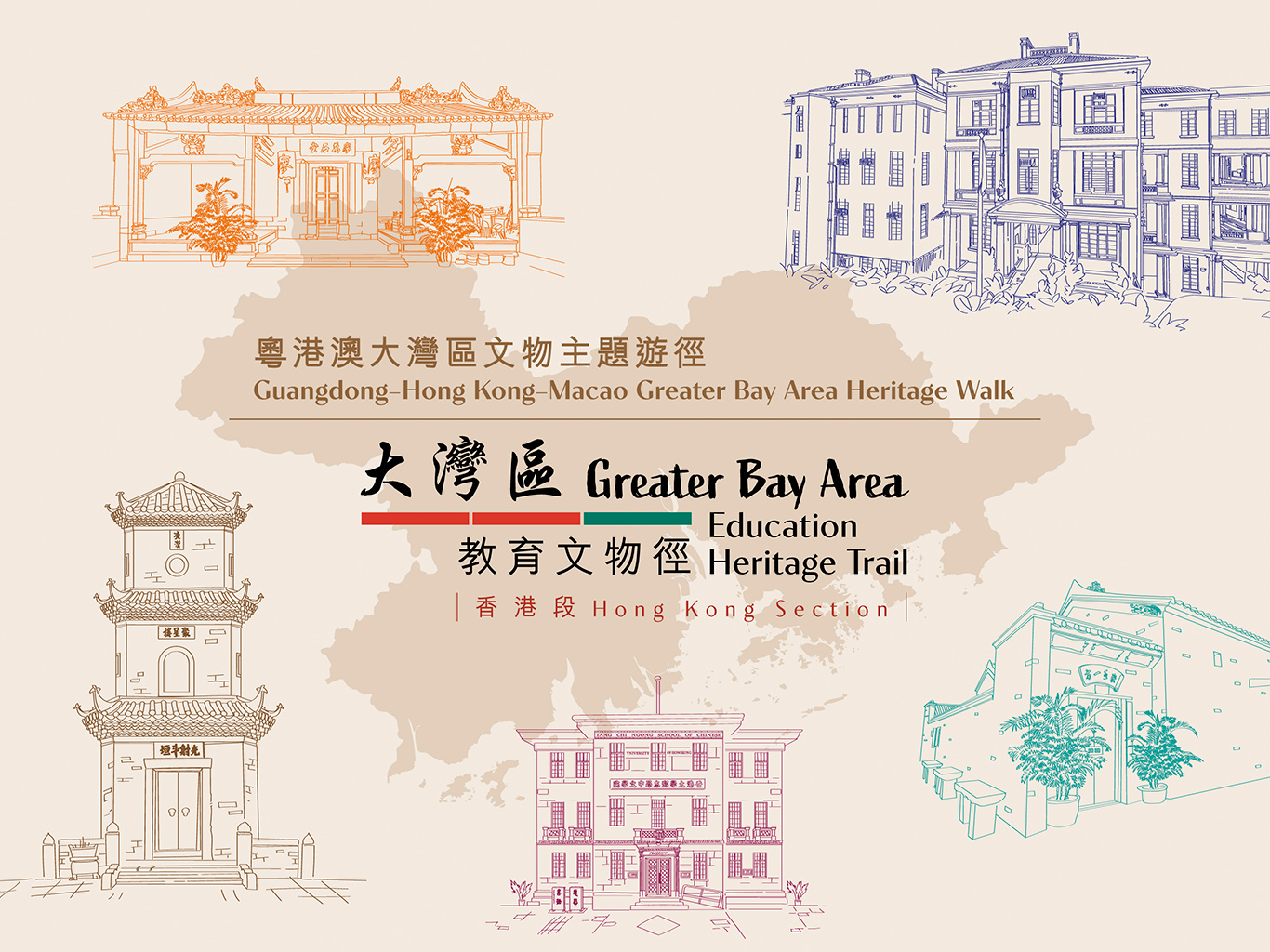
Since ancient times, the Guangdong-Hong Kong-Macao Greater Bay Area (GBA) has been part of the Lingnan region. The history and culture of the three places have common roots. The existing historic buildings in the GBA embody China's long-standing traditional architectural culture, and reflect the Lingnan people’s open, inclusive and diverse humanist spirit, inspired by frequent exchanges between China and the West in modern times. Guangdong, Hong Kong and Macao are intricately connected in terms of education. For instance, in Qing dynasty, local clans built many private schools and study halls to prepare their young clansmen for the Imperial Civil Service Examinations, illustrating the cultural and education system in the Lingnan region in the past. In the late Qing dynasty, many learned scholars came to Hong Kong to promote Sinology, driving the development of Chinese language education in Hong Kong. After the abolition of the Imperial Civil Service Examinations in the early twentieth century, traditional study halls adjusted their mode of teaching to be in line with the “6-3-3” school system in the Mainland, so that students could further their education in the Mainland. After the fall of Guangzhou during the Japanese Invasion, many renowned schools were relocated to Hong Kong and Macao and borrowed local school buildings to continue to operate. After the Fall of Hong Kong, some of the schools returned to their original sites in the Mainland or joined with other schools to continue to operate, while taking in many Hong Kong students. In times of great difficulty, they remained dedicated to education. Tracing the past incidents associated with the historic educational buildings has made it possible to map the history and development of the GBA through previously little-known stories.
With the signing of the Memorandum of Understanding on the Exchange and Collaboration on Archaeological and Cultural Heritage Amongst the Greater Bay Area in 2022 by the Development Bureau of the Government of the Hong Kong Special Administrative Region, the Department of Culture and Tourism of Guangdong Province and the Cultural Affairs Bureau of the Government of the Macao Special Administrative Region to enhance the collaboration and exchange in the research on archaeology and historic buildings, heritage conservation, revitalisation of historic buildings and, education and promotion of heritage, Guangdong, Hong Kong and Macao joined hands to plan and set up the first heritage trail in the GBA using historic educational buildings as the starting point to trace our common historical roots and humanistic connections.
For the Greater Bay Area Education Heritage Trail (Hong Kong Section) of the Guangdong-Hong Kong-Macao Greater Bay Area Heritage Trail, the Antiquities and Monuments Office (AMO) of the Development Bureau, selected 48 historic buildings on 37 sites from more than 100 declared monuments and over 1,000 graded historic buildings. With the support of the respective owners, the sites are included in the heritage trail. They are categorised into four themes: (1) “Triumph in the Imperial Examinations: Architectural Style and Art of Lingnan Traditional Study Halls”; (2) “People and Sentiments: Nurturing National Talents”; (3) “Good Education Takes Time: Passing on the Mission of the Founding Schools”; and (4) “United in Resistance: Defending Our Home and Country”. Visitors can scan the QR codes on the information plaques of the historic buildings to access information on the heritage trail on the AMO website. Audio guides in Cantonese, Putonghua and English help visitors learn about and appreciate the historic buildings and their stories as they walk along the heritage trail. The cross-regional Guangdong-Hong Kong-Macao Greater Bay Area Heritage Trail is vibrant and full of life. The contents and sites will be continuously expanded and explored in-depth. We hope visitors of the trail will share stories of the historic buildings with us, so that people in the GBA can experience their shared cultural roots and common lineage on these sites.
For further information on the Greater Bay Area Education Heritage Trail, please visit:
(Guangdong Section)
https://www.prdculture.org.cn/ygawlzxw/jylslgd/ygadwqwwztyj_list.shtml
(Macao Section)
https://www.culturalheritage.mo/en/plans
Renowned Chinese historic architecture expert Liang Si-cheng said, “The evolution of the scale, form, construction and art of architecture reflects the rise and fall of a culture; and a nation's architecture demonstrates its material spirit, as well as its past, present and future." The above-mentioned educational historic buildings reflect the tradition and passing on of the emphasis on education in the Lingnan region and bear witness to the shared history of Guangdong, Hong Kong and Macao. Even though different parts of the GBA have developed in different ways, the people have transcended geographical territories and space, supporting and helping one another through hardships. They remain closely connected even today. The GBA will continue to deepen exchange and collaboration, enriching the contents of the heritage trail, enhancing people's understanding of their common history and culture, increasing their sense of national pride, promoting Chinese culture and telling good stories about China.